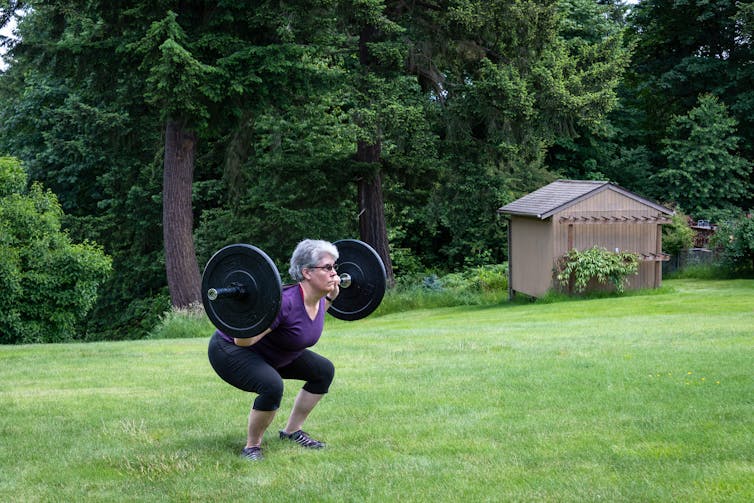Weightlifting has become increasingly popular with people looking to get in shape. Not only can it be a great way to lose weight, it can also build strength and prevent muscle loss as we age.
But knowing how to start weightlifting can be intimidating, especially if you haven’t been a regular gym user, or typically enjoy doing other types of exercise, like running.
Here a couple of tips to help you start weightlifting this new year:
1. Before you start
If you’re completely new to weightlifting, it might be best to book a gym induction to learn about the equipment and how to properly use it. It may also be good to look for gyms that meet your needs and experience level – or even consider hiring a trainer.
Another thing to think about when starting are your goals. Ask yourself what you want to achieve, and in what time frame? How much time do you have a day or week to train? Establishing goals will help motivate you and give you something to aim for. Teaming up with a friend or colleague may also encourage you to stick to your goal.
2. Choosing your weights
If you’re new to the gym, using resistance machines is a good start. These have a fixed position and pathway, which helps guide your movements. This makes them easier to use than free weights (such as a dumbbell) and can help build your confidence and strength. They may also be good for people with a limited range of motion. Start with compound exercises, such using a leg press or seated rowing machine, which work many muscle groups.
However, free weights can still be a beginner option. These are good for isolating muscles and correcting imbalance (for example, if one arm or leg is weaker than the other), but require more stability and awareness of your working muscles. Many free weight exercises, such as squatting, deadlifting or push-ups, are also similar to movements we use everyday. This may mean you develop strength that’s more transferable to daily tasks, such as carrying heavy shopping bags.

As free weights don’t have a fixed pathway, it’s important to ensure you’re focusing on your technique when using them to avoid injury. Using mirrors, taking a video or asking a coach or friend to watch you may also help you with your form.
Regardless of whether you use machines or free weights, you should always try to focus on pain-free movement and good technique.
3. Progress gradually
While it might be tempting to jump straight in, it’s important to ensure you don’t do too much all at once. Not only can this cause delayed onset muscle soreness, which may make it more difficult to exercise, it can also result in injury. In rare cases, overdoing it at the gym might cause rhabdomyolysis, a potentially life-threatening condition which results from muscle damage and could lead to kidney failure.
To avoid injury and build fitness, work towards progressive overload which involves adding more repetitions or weight the next time you perform an exercise. Start off with a light load focusing on proper technique – even if this means using no weight at first. For a beginner, you might also only train twice a week for the first two or three weeks as your body gets used to your new routine to avoid injury.
As you begin to improve, you can increase weekly training frequency or try gradually increasing the number of repetitions of the weight you’re lifting. To increase strength and muscle, it’s recommended that the number of reps you do is still challenging. Depending on how much weight you’re lifting, this may range anywhere between eight to 12 repetitions of an exercise, repeated three or four times, twice a week. For beginners, it will take around six weeks before you see a small increase in muscle.
When an exercise becomes easier to perform, or if you need to do more repetitions to feel the same effect as you used to, it’s probably a sign to increase the weight you’re lifting.
4. Rest
When you have a goal in mind, such as losing weight or building strength, you might want to exercise every day. But taking a day or two off every week is important for avoiding injury and allowing your muscles to recover and grow.
Feeling overly fatigued, irritated, lacking concentration or not sleeping well are all signs you need a rest day. Light activities such as stretching, yoga or a walk, are great ways to reset and recover. Eating a good, nutritious diet is also important for helping your muscles recover.
While weightlifting might seem intimidating, it’s something that can be done by anyone at any age, and can be easily adapted according to a person’s abilities. Importantly, it may take a bit of trial and error to find what exercises work best for you and which ones you most enjoy.
Athalie Redwood-Brown, Senior Lecturer in Performance Analysis of Sport, Nottingham Trent University and Angus Hunter, Professor in Neuromuscular Physiology and Head of Sport Sciences, Nottingham Trent University
This article is republished from The Conversation under a Creative Commons license. Read the original article.

